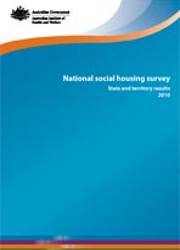Summary
Characteristics of social housing tenants
About half of all households surveyed were in the labour force. Labour force participation was highest among public housing respondents in Tasmania (60%) and lowest among New South Wales and South Australian public housing respondents (46%).
Fewer than 1 in 10 respondents for both public and community housing recorded that at least one member of their household was of Aboriginal or Torres Strait Islander origin (7% and 5% respectively). The Northern Territory recorded a considerably larger proportion of households where at least one member of their household was of Aboriginal or Torres Strait Islander origin (23%).
Apart from Tasmania, a higher proportion of community housing than public housing respondents reported experiencing homelessness at some point. Queensland community housing respondents recorded the highest proportion of people experiencing homelessness with nearly 4 in 10 (37%) reporting they had been homeless in the past.
Almost one-fifth of social housing households contained at least one person who needed help with self-care, communication or body movement activities (19% for public housing and 18% for community housing). The largest group of tenants experiencing difficulties with self-care, body movement or communication in social housing were those who had a disability. This was highest among Western Australians in community housing and lowest among Victorians (11% compared with 6%).
Use of support services
Across all reported jurisdictions, health or allied health services were needed most frequently by both public and community housing households (67% and 70% respectively), followed by mental health and personal support services. Victorian public and community housing respondents generally recorded a higher service need than any other jurisdiction.
Social housing satisfaction
Overall, community housing respondents were slightly more satisfied with the services offered by their housing provider than public housing respondents (79% compared with 73%). Community housing respondents in Tasmania reported the highest level of satisfaction, while among public housing tenants the highest level of satisfaction was in Queensland (90% and 84% respectively).
Overall dissatisfaction (either dissatisfied or very dissatisfied) with the services offered by their housing provider ranged from 5% among Tasmanian community housing respondents to 21% among those in New South Wales public housing.
The majority of public housing (59%) and community housing (73%) respondents were satisfied or very satisfied with the physical condition of their home. Among community housing tenants, respondents in Tasmania (83%) and Queensland (79%) were most satisfied, while among public housing tenants, those in Queensland (69%) and South Australia (68%) were the most satisfied.



